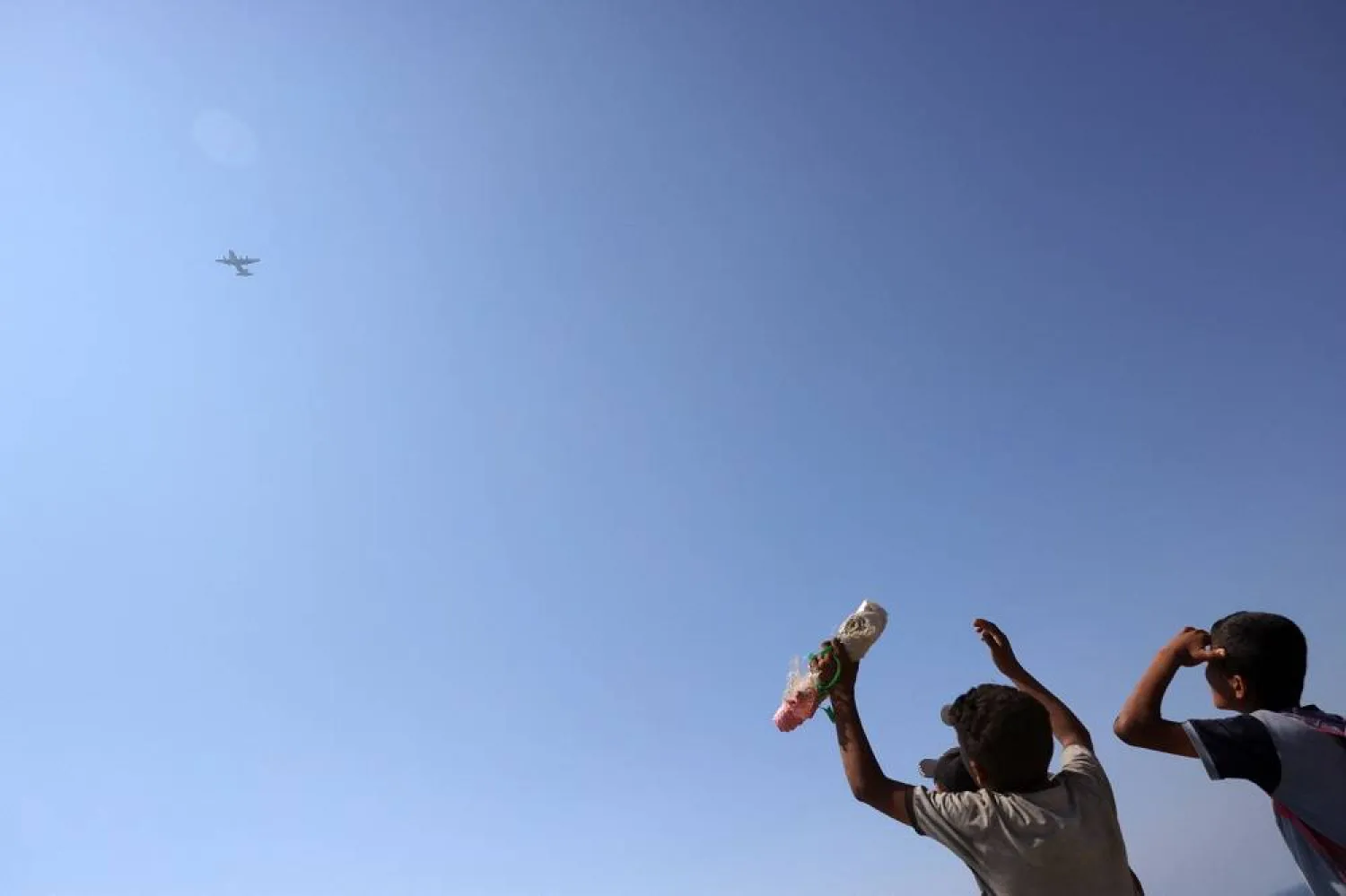With fears growing of a "full-scale war" between Israel and the Palestinians, here is a look at the West Bank and the Gaza Strip.
The two territories plus Israeli-annexed east Jerusalem were long touted as basis of a Palestinian state in a "two-state" solution to the long-running conflict.
But that goal has become ever more distant, with the West Bank fragmented by Jewish settlements and several states recognizing Jerusalem as Israel's "undivided" capital.
Here is some background:
- Occupation -
In 1947 the United Nations voted to partition British-ruled Palestine into two states -- one Arab and one Jewish.
It made Jerusalem, sacred to the three Abrahamic religions and claimed by both sides as their capital, an international zone.
Almost immediately, fighting broke out that would eventually see more than half the Palestinian population -- 760,000 people -- fleeing or being expelled from what was to become Israel.
As the British mandate ended in 1948, Israel declared statehood.
The next day its Arab neighbors declared war. The conflict ended with Israel controlling 78 percent of mandate Palestine.
In the so-called Six-Day War of 1967, Israel occupied both the West Bank and the Gaza Strip.
It also occupied and later annexed east Jerusalem, which contains many of the sites holiest to Judaism, Islam and Christianity.
- West Bank -
By far the larger of the two Palestinian territories, the West Bank covers 5,655 square kilometres (2,180 square miles) and is sandwiched between Israel and Jordan.
It has been occupied by the Israeli army for the past five decades.
The Palestinian Authority, headed by Mahmoud Abbas, has limited powers over just 40 percent of the territory, mainly urban centers.
Israel, which controls all the entry points, administers 60 percent of the territory including its Jewish settlements, as well as its vital water resources.
Israel has also erected a security barrier partly following its armistice line with the West Bank but also cutting deep into the territory.
About 400,000 Israelis live in the West Bank, alongside 2.7 million Palestinians.
- East Jerusalem -
The sparks for the current crisis were clashes at the flashpoint Al-Aqsa mosque compound and a years-long bid by Jewish settlers to take over homes Palestinians say are theirs.
The status of Jerusalem is possibly the most sensitive issue of the whole conflict.
After capturing it in 1967, Israel annexed east Jerusalem, including the Old City, in a move never recognized by the international community.
Israel views the whole city as its capital: a stance backed by former US president Donald Trump, who moved Washington's embassy there.
Palestinians want East Jerusalem as the capital of their own future state.
The Old City, a UNESCO World Heritage site, includes the golden Dome of the Rock and Al-Aqsa mosque compound, Islam's third holiest site.
This lies directly above the Western Wall, the holiest place where Jews are allowed to pray, a short walk from the Church of the Holy Sepulchre, where Christians believe Jesus was crucified and buried.
More than 200,000 Israelis live in east Jerusalem, alongside around 300,000 Palestinians.
- Gaza Strip -
This strip of territory bordering Israel sits on the Mediterranean Sea, and also shares a border with Egypt.
It is one of the world's most densely populated areas, with some two million people squeezed into a strip just 41 kilometres (25 miles) long and at one point less than six kilometres across.
After occupying Gaza for 38 years, Israel unilaterally withdrew in 2005, but soon afterwards imposed a stifling land, air and sea blockade.
Islamist movement Hamas, which won Palestinian elections in 2006, seized the territory from the Palestinian Authority the following year.
Israel, which like most western governments considers Hamas a terrorist organization, has carried out three full-scale military offensives against Gaza since 2008.
Around half of the population is out of work, two thirds of them young people, according to the World Bank. More than two thirds of the population depends on humanitarian aid.
Half of Gaza's residents live below the internationally recognized poverty line.







